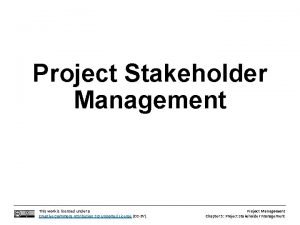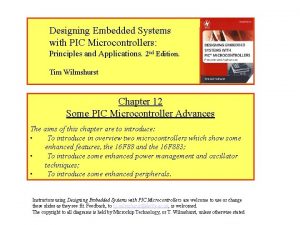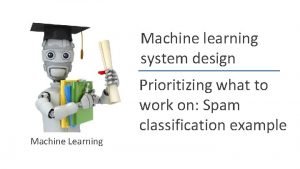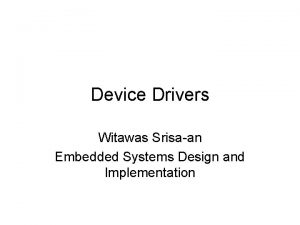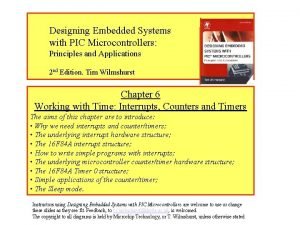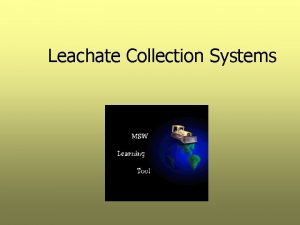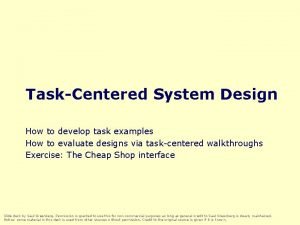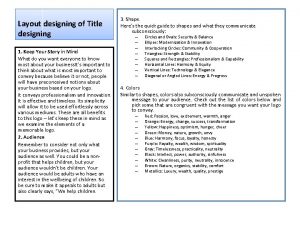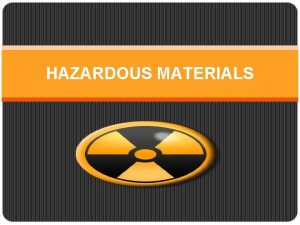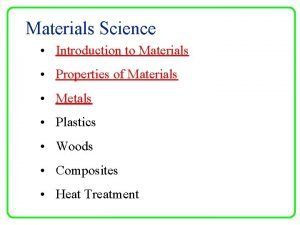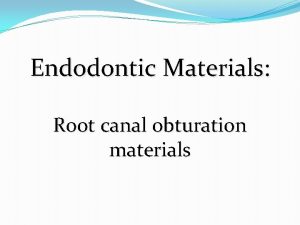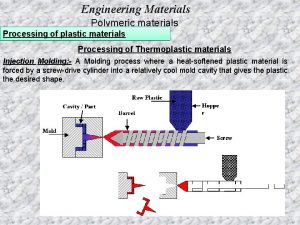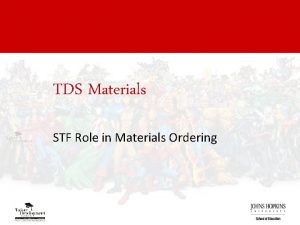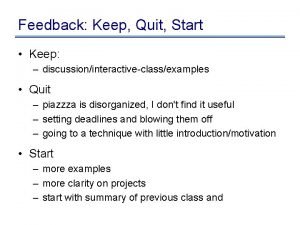Collection Systems Designing Collection Systems that Keep Materials





























- Slides: 29

Collection Systems Designing Collection Systems that Keep Materials Out of Landfills and Incinerators

In This Lesson By the end of this lesson, learners will be able to: • (Knowledge Level) identify the various bins and carts used to collect waste and recyclables • (Comprehension Level) contrast the differences in collection systems for residential and commercial resource streams • (Application Level) classify resources into collection categories that optimize both diversion and costs

Collection Sectors Collection systems generally fall into three categories: • Residential • Commercial • Industrial / Construction

Collection System Considerations How often What materials How many separations What kind of containers/bins What kind of vehicles What is the collection area density • What kind of local facilities • • •

Residential Systems Most common systems • Weekly collection • Resident sorts (3 -stream) – Trash – Recyclables – Yard/Organics • Carts (with wheels) • Side-side-load/rear-load trucks • Dense collection / houseto-house by area Photo credit: Judi Gregory

Automated (Cart) Collection ü Pro’s Con’s ü Larger container => higher recovery rate ü Consistent look / aesthetically pleasing ü Easier to store recyclables ü Easier to get to the curb ü Reduced worker injury & costs ü Less litter on windy days ü Keeps the paper dry ü Dry materials easier to sort • Limited # of containers/space • Higher cost of for additional containers • Harder to get community buyin/support • Less jobs/fewer workers on truck 6

Carts versus Cans • Manual – cans and totes • Semi-automated – carts • Fully-automated – carts • Split Carts

Collection Vehicles • Single or multicompartment • Sizes vary from 2 -axle to 4 -axle • Automated, semi automated • Side-load, front-load, rear-load options

Yard Waste & Green Stuff Variety of options. • Consider climate & rural or suburban • Bundled or Can • Seasonal only • Mixed with food • Limited / Unlimited amounts

Mixed Collection Options It’s can be easier because: • Throw it all in together • Little to no promotion or education effort or cost • Easy to add new materials But…. • Requires extensive processing • Results in higher contamination, higher costs to sort and process, and higher residual waste Need to consider increased participation –v- increased residual, and downgraded commodities

Collection

Consider various residential collection systems, notably those where you live. What are the key differences between them and how do they effect diversion, cost and ease to residents?

Collection System Considerations • Varying volume • Different materials depending upon industry • Single – multi-day collection needs • Space for bins inside work area and outside • Challenges educating employees

Commercial Recycling Systems All commercial recycling is not created equal… 1 program won’t fit ALL • Offices – Office paper • Retail & Distribution – cardboard, packing materials & mixed paper • Restaurants – cardboard & food scraps • Hotels & Entertainment Venues – fiber, containers & food scraps • Flooring – wood, carpet and padding

Commercial Collection Equipment • Front-load trucks are the primary collection vehicle • Front-load bins, shown below are most common • Carts, shown on truck forks can be used for small business recycling

Office Recycling • Desk-side containers • Centralized containers • Collection containers • How to get materials outside for collection • No garbage can option • Where do office programs fail? …The Role of the custodial staff

Custodial Contracting • Ensure that collection of source separated recyclables is in the contract • Provide proper training • Provide proper carts to collect sorted materials • Monitor for compliance

Custodial Training A critical part of teamwork is ensuring the Custodial Staff knows: • Direct contact with Custodial Supervisor • What is recyclable? • Ensure correct language is used based on staffing • Is there a Contractor Orientation that includes the basic information? • Physically show employees what goes where Slide Credit: SBM

Retail Recycling • Typically larger volume • Boxes that products arrive in • Significant volumes of plastic • Administrative paperwork • Unsalable items

Restaurant Recycling • Back of House • Boxes • Containers • Food scraps • Food Prep • Food not served • Front of House • Plate scrapings • Newspaper, bottles

Construction & Demolition Recycling • High volume • Various materials: wood, metal, drywall, concrete, cardboard… – sorted onsite • Demo is ideal for reuse and donation (habitat for humanity • Collection in large roll-off boxes

Industrial Recycling • Manufacturing Scrap • Transportation Packaging • Pallets

Technology Company Recycles Polystyrene • In 2003, business generated 7, 500 pounds per month of Polystyrene planks from received parts packaging • Material was in pieces that were bulky but didn’t weigh much • Business was paying approximately $16. 8 K per month to dispose of material • Difficult markets for recycling Overhead shot of the Polystyrene bales and plastic

Initial Solutions • Shred Materials - and blow into compactor – Cost to shred – Did not work, hot and humid in Memphis • Bale Materials - put in horizontal baler – Lightweight, made 400 pound bales – Very labor intensive – Benefit of avoided disposal cost

Intermediate Solutions • Evaluate a Block Densifier – Densified Polystyrene 40 to 1 • Labor intensive • Large capital investment • Equipment malfunctions – Operating 24 -7 – 2 machines –high frequency downtime • Benefit of avoided disposal cost by sale of material Block Densifier: 40 to 1 Densification about $40 K to purchase Purchased 2

Long-Term Solution • Volume increases to over 1 million pounds per year • Installed Big Brutus – – Reduced breakdown Reduced labor Increased output volume Less headaches • Saved $102 K in avoided disposal • Sold Polystyrene for $85 K per year Big Brutus: 1 shredder that blows the polystyrene beads into the bags and then only part of the time does the blue machine work

Cost Analysis History of Cost $200 $180 $160 $140 $120 $100 $80 $60 $40 $20 $0 Landfill Cost Shred Bale Densify Avoided Cost Revenue Densify more • Initial expense of $200/year in disposal • Initial solution has avoid disposal to offset cost • Intermediate solution increases avoided cost and adds revenue • Final solution has most revenue and avoided cost

Key Learnings Previous issues where the broken down Polystyrene beads go everywhere • Look outside the box for ideas • Take steps to a solutions, starting with least capital investment • Talk with colleagues, peers, others that have had the same issue • Ask for references • Plan for learning curve

Ask students to discuss alternatives to polystyrene recycling that might have been considered in the previous case-study. What are the economic and environmental benefits?
 Parents promoters apathetics defenders
Parents promoters apathetics defenders Stakeholder mapping
Stakeholder mapping Keep it secret keep it safe
Keep it secret keep it safe Phân độ lown
Phân độ lown Premature atrial contraction
Premature atrial contraction Thể thơ truyền thống
Thể thơ truyền thống Thơ thất ngôn tứ tuyệt đường luật
Thơ thất ngôn tứ tuyệt đường luật Walmart thất bại ở nhật
Walmart thất bại ở nhật Tìm vết của mặt phẳng
Tìm vết của mặt phẳng Con hãy đưa tay khi thấy người vấp ngã
Con hãy đưa tay khi thấy người vấp ngã Tôn thất thuyết là ai
Tôn thất thuyết là ai Gây tê cơ vuông thắt lưng
Gây tê cơ vuông thắt lưng Sau thất bại ở hồ điển triệt
Sau thất bại ở hồ điển triệt Designing embedded systems with pic microcontrollers
Designing embedded systems with pic microcontrollers Machine learning system design examples
Machine learning system design examples Designing device drivers for embedded systems
Designing device drivers for embedded systems Data memory
Data memory Pic architecture diagram
Pic architecture diagram Favourite cars
Favourite cars Differentiate useful and harmful materials
Differentiate useful and harmful materials Man made materials
Man made materials Differentiate adopting materials and adapting materials
Differentiate adopting materials and adapting materials Direct materials budget with multiple materials
Direct materials budget with multiple materials Landsat collection 1 vs collection 2
Landsat collection 1 vs collection 2 Clean collection vs documentary collection
Clean collection vs documentary collection 3 modern materials
3 modern materials Unit 2 energy, materials, systems and devices answers
Unit 2 energy, materials, systems and devices answers Leachate collection system diagram
Leachate collection system diagram Task designing example
Task designing example Emosional adalah
Emosional adalah

